Written in the stars
Oct 7, 2019

The stars have aligned for Dark Sky Project, a bold new astro-tourism venture in Takapō. It’s the longstanding vision of the founders of Dark Sky Project’s predecessor Earth & Sky, Graeme Murray and Hide Ozawa, whose passion is to preserve and showcase the region’s famously dark skies. This purpose has new fulfilment through a joint venture with Ngāi Tahu Tourism. Kaituhi Sampson Karst travelled to the alpine village for the opening of Dark Sky Project’s new lakeside venue.
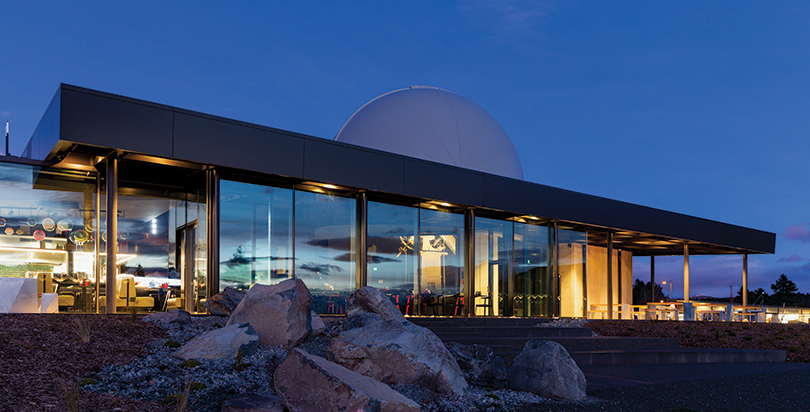
The new building, named Rehua, boasts a multi-media indoor astronomy experience that combines science and tātai aroraki (Māori astronomy). A mana whenua working party ensured they were able to contribute to the project in a way that celebrated their time-honoured connection to Te Manahuna (the Mackenzie Basin).
On a brisk winter morning on the shore of Lake Takapō, a cluster of people gathered to cross the threshold. The crowd huddled close as karakia flowed from the front of the procession, and the voice of Te Wera King rang out: “Ko wai te whare e tū nei?” Who is this house that stands before us? A chorus of voices answered: “Ko Rehua!” It is Rehua! Amidst the natural beauty of the turquoise lake and snow-capped mountains, Rehua welcomed its first visitors in a fitting manner – in darkness, under the stars, and to the sound of karakia and karanga.
The dawn ceremony was an echo into the past, with the karakia mirroring those said by Waitaha chief Rākaihautū when he led the first expedition into the interior of Te Waipounamu. Using his kō, he dug out the principal lakes of Te Waipounamu – Ngā Puna Wai Karikari o Rākaihautū – including Takapō.
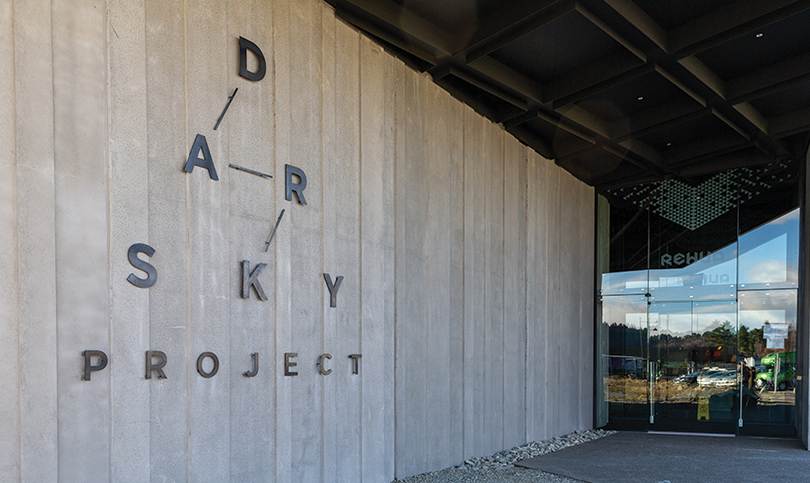
Above: The entrance to Rehua featuring the distinctive Dark Sky Project logo.
Our tūpuna were a people who believed in karakia, and in remembering the traditions of their ancestors – often by weaving messages into an entertaining story. When these tales are retold by proficient orators, the knowledge can be retained over centuries – one of the many reasons that the art of storytelling is so highly prized within te ao Māori. Dark Sky Project is a chance to celebrate this tradition and engage with lesser-known stories, written in the night sky, waiting patiently for us to reclaim them.
This theme of knowledge transmission ties into the name chosen for the building that houses this exciting new venture. Rehua is the deity associated with all knowledge – a fitting name for a whare dedicated to teaching its visitors about the night sky and all celestial objects. Known as Antares in western astronomy, Rehua is one of the most well-known stars within tātai aroraki. He is discernible in the night sky by his distinctive red colour, and is part of the reason that red is a central component in the impressive new branding developed for Dark Sky Project. The contemporary logo is inspired by Mahutoka, the Southern Cross. The lines linking the letters are drawn from the stitching in tukutuku panels, and represent the link between us and the night sky.
“It’s a totally new kind of project in the sense that rūnanga have been actively involved in the development of this place and the content … but it was really necessary to give rūnanga a hands-on experience of what it’s actually like to put a business of this magnitude and scale together.”
Te Wera King
Upoko, Te Rūnanga o Arowhenua and Te Rūnanga o Waihao
Ngāi Tahu Tourism Chief Executive Quinton Hall spoke at the opening ceremony, and was quick to praise business partners Graeme Murray and Hide Ozawa. In addition to establishing Earth & Sky, they are also vocal advocates of the Aoraki Mackenzie International Dark Sky Reserve, ensuring that light pollution is kept to a minimum to allow for the highest standard of astro-tourism. Above all, Quinton says, they were quick to understand the value that mana whenua could add to this kaupapa.
“We developed this experience with some key partners, but primarily we were working with mana whenua. We were able to connect with them and the multi-disciplined team at the University of Canterbury, as well as the talented design team, to create an amazing experience that encompasses culture, astronomy and science.”
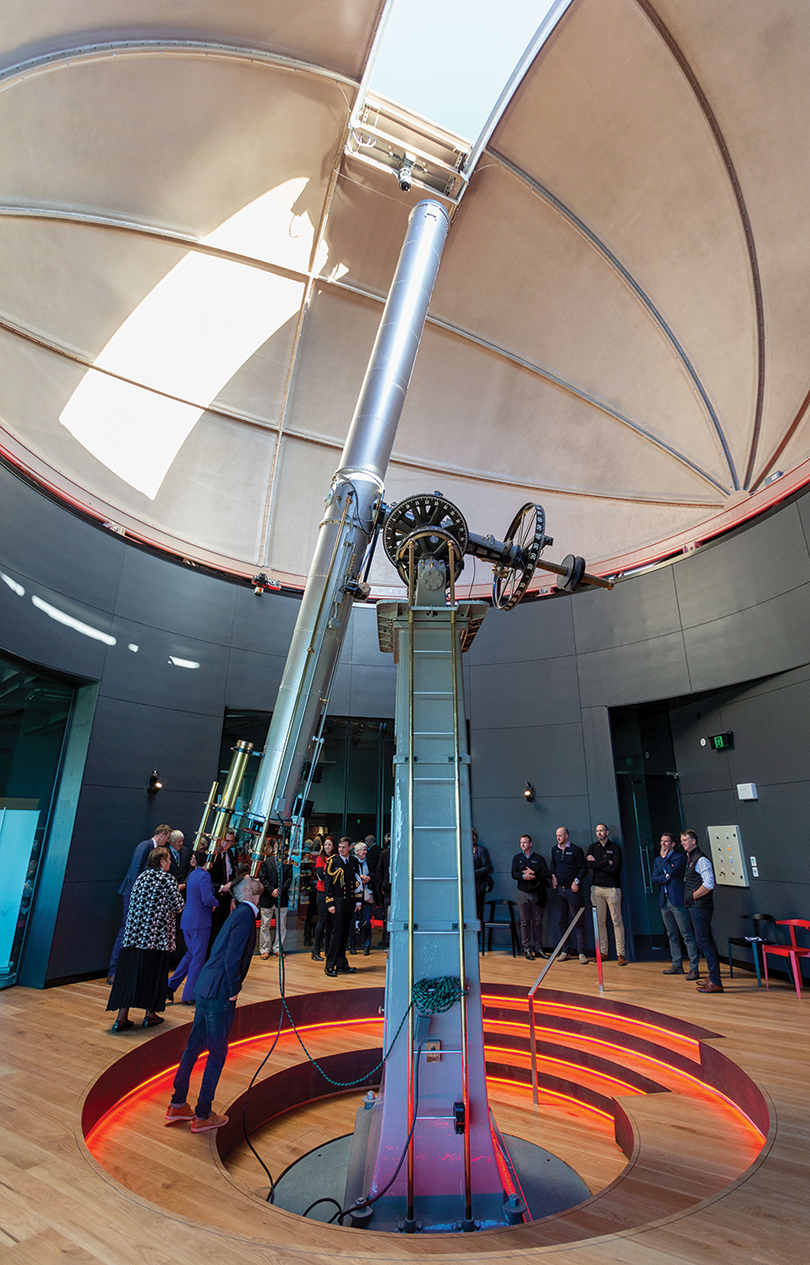
Above: The 125-year-old Brashear Telescope, a Victorian masterpiece that has sat in storage for 50 years before being restored for Dark Sky Project.
From the outset, the intention was to focus on collaboration to ensure that the experience was truly of the place. The mana whenua working party was made up of rūnanga members nominated from Arowhenua, Waihao, and Moeraki. Their role was to provide cultural guidance to Ngāi Tahu Tourism and Earth & Sky, and to ensure that the project celebrated and honoured their connection to Te Manahuna.
The group members were Te Wera King, David Higgins and the late Mandy Home supported by technical specialists Justin Tipa, Darren Solomon and the late Tahu Pōtiki. The contribution of both Mandy and Tahu are warmly acknowledged. E ngā rangatira, moe mai rā.
“It’s a totally new kind of project in the sense that rūnanga have been actively involved in the development of this place and the content,” says Te Wera King, upoko of Te Rūnanga o Arowhenua and Te Rūnanga o Waihao.
“It’s an experience that’s taken both sides out of their comfort zones, but it was really necessary to give rūnanga a hands-on experience of what it’s actually like to put a business of this magnitude and scale together.”
Justin Tipa (Ngāti Hāteatea, Ngāti Hinematua) agrees. He says his role on the mana whenua working party gave him a front row seat to watch Dark Sky Project come to life.

Above: Tamariki line up ready for the 45-minute Dark Sky Experience.
“This is indeed a commercial operation with tremendous potential, but it also houses our cultural knowledge; so this is a significant event for the three rūnanga involved.” The mātauranga Ngāi Tahu that Justin refers to is explored in a new daytime tour, guiding visitors through a specially-designed experience zone. The 45-minute interactive encounter blends Māori astronomy and creation traditions with University of Canterbury research carried out at the Mt John Observatory.
When the working party wanted to consult an expert on Māori astronomy to make sure the experience was as accurate as possible, there was one person who immediately came to mind. As the preeminent scholar of tātai aroraki in Aotearoa, Dr Rangi Matamua was invited to consult on star lore and the overall visitor experience.
“It started with just a few meetings and a concept, and now it’s actually come to life,” says Dr Matamua.
“As an introduction point, I couldn’t think of a better space or place for people to come and get a brief but in-depth, and a very connectable experience to Māori astronomy.”
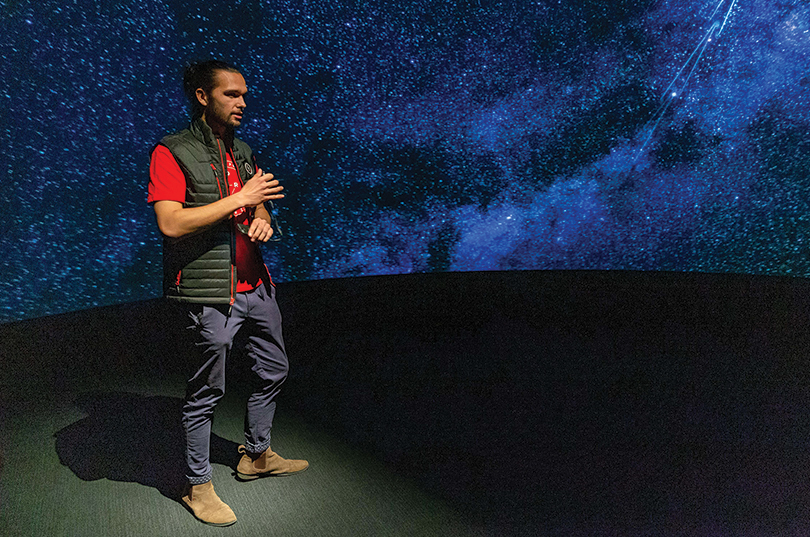
Above: Guide Alex Solomon delivering his kōrero as part of the Dark Sky Experience.
A notable example of this unique and immersive experience takes place when visitors are invited to peer into a digitally-projected lake. Tuna can be seen swimming through the water, their movements giving way to a rising constellation of stars. The tour guide explains the connection – that the appearance of this particular constellation was a sign that tuna would be plentiful and ready to harvest. This is an impressive example of the way that modern technology has been merged with the traditional stories and mātauranga of mana whenua to create the best astro-tourism experience on the market.
“For me it’s really important to be able to present the Māori content. It’s my history, so I really enjoy sharing that with guests from all over the world. It’s about connection to the night sky, so people can get an understanding of how traditional astronomy played a part in our past.”
Alex Solomon Kāti Huirapa, Kāti Hinematua
For Dr Matamua, the highlight of working on this kaupapa was meeting with mana whenua to sit down and exchange knowledge and stories. “Ngāi Tahu continue to hold a lot of knowledge around the environment – traditional knowledge that’s recorded and that they’re still practicing,” he says.
“I was able to give the astronomical risings, and the dates that I gave fell into complete sync with what they were talking about. For me that was affirmation; a confirmation that it’s all connected and that what we are doing is correct.”
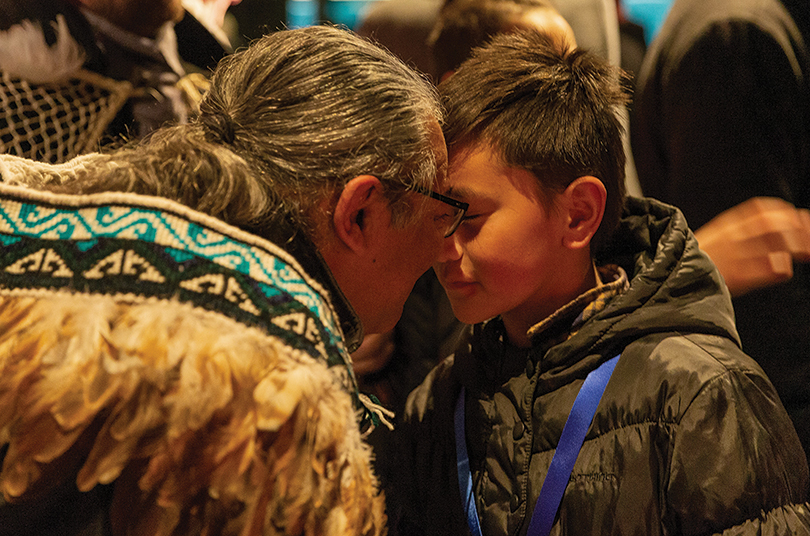
Above: Te Wera King welcoming manuhiri to the opening of Dark Sky Project.
David Higgins, upoko of Te Rūnanga o Moeraki, says working on this project has contributed to a broader understanding of the night sky. “We have got to work with wonderful people like Rangi Matamua, who has been a valuable asset to the development of our knowledge and understanding.”
For David, this knowledge is both a step closer to our tūpuna, and an important opportunity to share our stories with the world. “I come from a coastal marae, where our people understood the star constellations and their importance to maritime journeys,” he says.
“We know what those star pointers mean, and to be able to share that knowledge with others throughout the world is very important for our people at home.”
Alex Solomon (Kāti Huirapa, Kāti Hinematua) is one of the new guides who has the privilege of sharing this knowledge with manuhiri. For Alex, working with Ngāi Tahu Tourism lets him engage with his whakapapa in a unique way.
“For me it’s really important to be able to present the Māori content. It’s my history, so I really enjoy sharing that with guests from all over the world,” he says.
“It’s about connection to the night sky, so people can get an understanding of how traditional astronomy played a part in our past.”
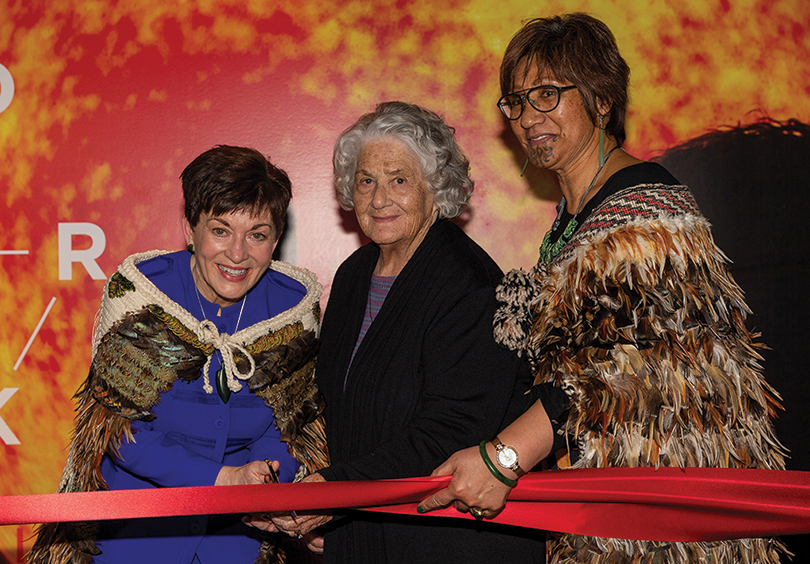
Above: Governor-General Rt Hon Dame Patsy Reddy cutting the ribbon with Reita Mathews and Suzy Waaka.
Dark Sky Project truly is a case study for commercial, cultural, and scientific shared ventures. Its relationship with the University of Canterbury means that it can support and advance astrono-mical studies. It represents a whare wānanga (place of learning) for Māori astronomy, while providing employment opportunities for mana whenua. It provides a unique experience for manuhiri, and because it is truly of the place, it cannot be replicated. For Ngāi Tahu it means reclaiming a physical footprint on the land, and showcasing our ancient history and heritage with new immersive technology. And for founders Graeme and Hide, it represents the opportunity to inspire and educate manuhiri from Aotearoa and further afield, and to connect them to our southern skies.